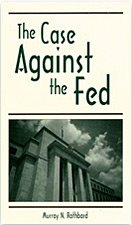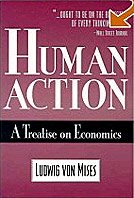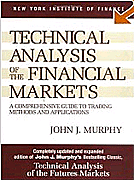My approach is different from that of other monetary scientists in that I take speculation into full account. The theory of speculation is conspicuous only by its absence from mainstream economics. (Keynes’ attempt to create one was a dismal failure.) But it is not a strong side of Austrian economics either. I reach back to Carl Menger and construct a theory of interest directly on his economic principles.
In this concluding part of my two-part series I suggest that the year 2006 has decisively changed the nature of gold speculation. Speculators no longer take the bait of riskless profits. They no longer short gold at the first sign of a rising gold price. It is only a matter of time before the marginal gold bull decides to short not gold, but the gold stock par excellence, Barrick.
Faux pas of Mises
My theory of interest is centered around the constant marginal utility of gold. It is this property that makes gold ‘most hoardable’. That there is a limit to gold hoarding is due solely to the institution of interest. The opportunity cost of hoarding gold is just forgone interest. This is a distinctive property of gold. The hoarding of all other goods is severely limited by declining marginal utility. Mises missed this fundamental connection between gold and interest. (This is not to mention David Ricardo. If Mises missed by inches, Ricardo’s ‘bullion plan’, adopted by Britain in 1925 and the by U.S. in 1934, missed by miles.) All this is fully worked out in my Gold Standard University lecture series, which has been in the public domain for many a year.
It follows that the rate of interest is just the rate of marginal time preference. In practical terms this means that the agent to regulate the rate of interest is the marginal bondholder*. He is doing arbitrage between the gold market and the bond market. As the rate of interest is falling below the rate of marginal time preference, he takes profits in selling his overpriced gold bond and puts the proceeds into gold. This action makes the rate of interest turn around. As it is rising above the rate of marginal time preference, the marginal bondholder will buy back his gold bond at a lower price.
It is interesting to note that Mises explicitly referred to this particular arbitrage, although without using that word.** So he was actually pretty close to discovering the real force driving the rate of interest. Yet he went astray because, for him, paper currency was a present good no less than the gold coin -- a faux pas.
Should the marginal bondholder accept paper currency in exchange for his gold bond, he would take zero in exchange for a positive income. Thus his protest against low interest rates would be counter-productive. In effect, he would jump from the frying pan into the fire.
This irrefutably shows that the action of the marginal bondholder aims at hoarding gold, and not currency in general. Under modern conditions the meaning of the term ‘time preference’ is not preference for an apple available today as against two apples available ten years from now. It is, rather, preference for holding the gold coin, a present good, as against holding the gold bond, a future good -- unless the rate of interest is sufficiently high to compensate for the unequal exchange.
Key to Gibson’s Paradox
Imagine my surprise when I learned that mainstream economists have also discovered gold as the only instrument to give teeth to time preference that would otherwise remain but a pious wish. See in particular the joint paper of Barsky and Summers. The correlation between the rate of interest and the price level under a gold standard was named ‘Gibson’s Paradox’. Paradox, because monetary theory according to Keynes would call for a correlation between the rate of interest and the rate of change (rather than the level) of prices. Gibson’s, because Irving Fisher named Gibson as the first author to make this observation. Keynes stated in 1930 that two centuries of data failed to confirm that a correlation existed between the rate of interest and the rate of inflation. Instead, between 1730 and 1930, the rate of interest and the price level showed a positive correlation which Keynes described as “one of the most completely established empirical facts in the whole field of quantitative economics”. No one has been able to come up with a full theoretical explanation. Friedman and Schwartz in 1976 concluded that “the Gibsonian Paradox remains an empirical phenomenon without a theoretical explanation”. It was not for want of trying, either. Irving Fisher wrote in 1930 that “no problem in economics has been more hotly debated”. Barsky and Summers also state that “Gibson’s Paradox has proven to be an especially stubborn puzzle in monetary economics”.
Yet to find the key to the ‘paradox’ we have only to observe that suppression of the rate of interest will intensify gold hoarding by the marginal bondholder which, under a gold standard, squeezes bank reserves and leads to a falling tendency of the price level. Conversely, we observe that when the rate of interest rises the marginal bondholder will, in buying the gold bond, release hoarded gold. Increase in the quantity of monetary gold increases bank reserves, and leads to a rising tendency in the price level. The ‘Gordian knot’ finds its ‘snap solution’ in Menger’s concept of marginal utility.
The regime of the irredeemable dollar
The validity of Gibson’s Paradox clearly extends to the regime of the irredeemable dollar with a variable gold price. It varies directly with the price level. In particular, as the irredeemable dollar loses purchasing power, the price of gold will rise for the stronger reason. In terms of Gibson’s Paradox, the price level rises less if the rate of interest is suppressed; otherwise it rises more.
Properly interpreted, there has never been an episode in history when Gibson’s paradox failed to operate. It is the empirical description of the apodictic truth that suppression of the rate of interest brings about increased gold hoarding, subject to leads or lags. Every ounce of hoarded gold is a testimony to the fact that somebody, somewhere, has found the quality of savings instruments, and their yield, inadequate. By making the regime of irredeemable dollar non-negotible, the U.S. government has foolishly deprived itself of the possibility to channel people’s savings into ‘socially more useful’ applications. Therefore it is the government, not the people, that is to be blamed for the present negative savings rate in the United States.
Government manipulation
In Part 1 I advanced the hypothesis that the U.S. Treasury and the Federal Reserve have been manipulating both the rate of interest and the price of gold. In more details, they encourage bull speculation in bonds and bear speculation in gold. They do it by making unlimited quantities of bonds available for the speculators to buy, and unlimited quantities of paper gold available for them to sell in the derivatives markets. Lures, in the form of risk-free profits, are planted along the path of the speculators.
Clandestine government policy to manipulate the bond and gold markets is revealed by statistics on the number of outstanding contracts in derivatives, showing an inordinate open interest in bonds on the long and in gold on the short side. Neither has any rhyme or reason to exist, in view of the underlying economic reality. What is more, the long interest in bond and short interest in gold derivatives are increasing exponentially, far outpacing the amount of bonds in existence, and the amount of gold available for delivery. Significantly, there is an extreme concentration of derivatives in the hands of three or four firms on the long side of the bond market, and on the short side of the gold market.
A most alarming development occurred recently as observed by Pinank Mehta on www.gold-eagle.com (October 6). The net long open interest of the 10-year US bond contract, as reported by Morgan Stanley Research, has increased explosively and is now greater than six standard deviations. This level is unprecedented.
The Twin Towers of Babel
In Part 1 I explained why the government was interested in manipulating speculators so that they compulsively construct such uneconomic Twin Towers of Babel. The purpose of Part 2 is to show that, in view of Gibson’s Paradox, there is a conflict involved in the dual manipulation. In fact, the two desiderata in the agenda of the government: the propping up of the bond price and the suppression of the gold price, are contradictory. In encouraging bull speculation in bonds the government prompts more gold hoarding, making gold scarcer and the gold price more buoyant still. On the other hand in encouraging bear speculation in gold, in so far as it is effective, gold hoarding is reduced pushing interest rates higher. Rather than canceling out, the two effects could ratchet up both the gold price and the rate of interest simultaneously. As a result, the Twin Towers will self-destruct in due course.
The regime of the irredeemable dollar is subject to the ‘sudden death syndrome’, a malady afflicting all fiat currencies with a 100 percent fatality rate. Creditors know this, and add a risk-premium to the rate of interest they charge on their loans. If it weren’t for bond derivatives, the dollar would have gone the way of the assignats and mandats already in the twentieth century. But the government plants lures, to induce speculators to buy the bonds. This keeps interest rates low, and props up the dollar.
However, in terms of Gibson’s Paradox, the suppression of the rate of interest means increased gold hoarding. To counter that threat, the government has to have recourse to a devious scheme to induce speculators to sell unlimited amounts of gold through the gold derivatives market. In Part 1 I described an imaginary mining concern, Sarrick Gold, with a phony hedge plan involving forward selling, to the exclusion of forward buying, of gold. Speculators are offered risk-free profits on the short side of the market. All they have to do is to pre-empt Sarrick’s forward selling strategy, that is, sell before Sarrick does.
Thus the Twin Towers of Babel, the long-bond pyramid and the short-gold pyramid, are interdependent. Neither one will prosper without the other prospering. Conversely, if one topples, so will also the other. It follows from standard theory of speculation that, in commodities, a short position constitutes unlimited risks, as opposed to a long position the risk of which is limited as the price cannot fall below zero. This suggests that the inordinate, fast-increasing and extremely concentrated short interest in gold is vulnerable and will act as a trigger when it gets wounded (that’s what the word ‘vulnerable’ makes you expect to happen). Delivery may encounter difficulties, backwardation may develop in gold futures, and the weakest link in the short chain may snap. Some shorts may default. That would cause other short positions cascade and defaults spread. The collapsing gold basis will accurately gage the development leading to the toppling of the short gold pyramid. In an earlier paper entitled: The Last Contango in Washington I conjectured that the collapsing silver basis may act as an ‘early warning system’ to herald the coming collapse of the gold basis.
The long bond-pyramid is at the mercy of the bond-bears, and the short gold-pyramid is at the mercy of the gold-bulls. Moreover, in terms of Gibson’s Paradox, a run on gold still available for delivery against gold derivatives would cause a panic in the bond market to sell. Thus the equilibrium of the Twin Towers of Babel turns on the knee-jerk reaction of the marginal bull speculator in gold. When he decides that Barrick is in fact bankrupt as it will never be able to make good on its forward sales commitments, he will do two things: (1) short Barrick stock, (2) take delivery on his long positions in the gold derivatives market.
Insatiable Appetite
Thus we have another ‘early warning sign’ for the collapse of the Twin Towers of Babel: the Barrick share price, already showing a profound shareholder disillusionment. It is significant that Barrick has worked up an insatiable appetite for further acquisitions. Its purpose is to confuse the issue through window-dressing of the balance sheet.
One might have expected that, having become No. 1 in the world, Barrick would want to catch its breath and rest on its laurels. Not so. Barrick is still looking for other gold producers to gobble up. This looks like a sign of desperation to me. As long as you are No. 2, appetite for acquisitions is understandable. You try harder. But when you are No. 1, it no longer makes sense. However, Barrick is in the limelight. The share price as compared with assets is lamentably low. It would be more fitting for the last than for the first in the business. The reason is the curse of the hedge book. It just won’t go away. Barrick will neither repudiate nor repair its faulty policy of forward selling of gold, in spite of dire warnings that it may eventually be the cause of its downfall. The hedge book is deep under water. It shows only forward sales, no compensating forward purchases.
Barrick has been challenged to mark its hedge book to market. The challenge was ignored. For all we know, there may be a good reason for that. Perhaps the rumors are true and, when liabilities are marked to market, all the assets of Barrick are wiped out. Barrick would be seen as being bankrupt. Could this be the very reason why Barrick is so desperate to acquire other gold mining assets? If it could buy badly needed time before share value declined more relative to assets, the worst could perhaps be averted.
Barrick loves to pay for its acquisitions with its own shares. From the point of view of its shareholders, this policy is disastrous. Not only does it mean further dilution of their share, but so low is the value of shares relative to assets that Barrick’s shareholders fear another attempt by management to fleece them. On the other hand, shareholders of the company targeted for a hostile takeover are increasingly reluctant to accept Barrick’s ‘stained’ shares in exchange for their ‘clean’ (read: not stained with forward sales) shares.
One wonders why targeted companies could not force Barrick to mark to market its existing commitments to sell gold forward. After all, the seller has the right to ask whether the check offered in payment by the buyer is backed as represented. Maybe they did try, whereupon Barrick decided to come up with the cash rather than make the uncomfortable revelation.
Atlas Shrugged
One can only guess that the urgency with which Barrick acquired Placer Dome is explained by the 2006 surge in the gold price. We may take it for granted that Barrick anticipated the surge, but could not close out the deal in time before it happened. At any rate, the two events are connected and their concurrence has materially changed the course of history. First, the utter futility of the short gold pyramid has convincingly been demonstrated. Speculators no longer take the bait: they no longer mindlessly short gold on the first sign of strength in the gold price. Second, Barrick has changed its strategy from forward selling to unlimited acquisitions. This is symptomatic of the problems Barrick is going to face in the future. The new battle cry is: “Acquire or die!” However, in doing so Barrick will be racing against a buoyant gold price.
This is the unpredictable part. Can Barrick acquire gold properties fast enough to win the race against a rising gold price no longer fettered by forward sales? If it can, this may be a set-back for the gold price. Atlas may be able to carry the $300 trillion derivatives market on its shoulder awhile longer.
But if it could not, and Atlas shrugged, then the short gold bubble would burst, triggering the collapse of the $300 trillion derivatives bubble. We could then expect to witness the ruination of the credit of the United States, and the close of the dollar system.
Endnotes
* In Human Action Mises treats time preference as if it were the same for everybody, paupers and nabobs alike. As I have found this too crude, I refined it by introducing the concept of the rate of marginal time preference, that is, the rate of the time preference of the marginal bondholder. He is doing arbitrage between the bond market and the gold market. The marginal bondholder is the first to reduce his bond holdings on the next downturn of the rate of interest.
Strictly speaking, there are two agents: the marginal bondholder regulating the floor, and the marginal entrepreneur regulating the ceiling of the range to which the rate of interest is confined. The ceiling is the rate of marginal productivity of capital as it is regulated by the marginal entrepreneur in doing arbitrage between the bond market and the capital goods market. As the rate of interest is rising above the rate of marginal productivity of capital, he sells his capital goods and invests the proceeds in the bond market. This action will make the rate of interest turn around. As it is falling below the rate of marginal productivity of capital, the marginal entrepreneur takes profits and sells his overpriced bonds. With the proceeds he re-equips his productive enterprise and starts production once more. For full details, see my Gold Standard University lecture series.
In this paper I have, for the sake of simplicity, assumed that the rate of interest is the same as the rate of marginal time preference, and the agent to regulate it is the marginal bondholder.
** The word ‘arbitrage’ does not occur in the Index of Human Action or in that of The Theory of Money and Credit. References
Robert B. Barsky and Lawrence H. Summers, Gibson’s Paradox and the Gold Standard, The Journal of Political Economy, vol.96, no. 3(June 1988) p 528-50.
A. E. Fekete, Gold and Interest, Monetary Economics 102, The Gold Standard University, www.goldisfreedom.com , January 1, 2003
A. E. Fekete, Gold Fever Trumps Gold-Hedge Fever,
www.goldisfreedom.com , January 13, 2003
A. E. Fekete, The Bubble That Broke the World,
www.gold-eagle.com , June 30, 2003
A. E. Fekete, The Last Contango in Washington,
www.gold-eagle.com, June 3, 2006
A. E. Fekete, When Atlas Shrugged..., Part One, www.gold-eagle.com ,
August 24, 2006
Milton Friedman and Anna J. Schwartz, From Gibson to Fisher, Explorations Econ. Res. 3 (Spring, 1976) p 288-91.
Announcement
I shall give a talk at the University of Chicago Business School on November 17, 2006 during the lunch-hour break. If you are interested to attend, please contact Ryan Humphreys at: ryan_humphreys@hotmail.com
DISCLAIMER AND CONFLICTS
THE PUBLICATION OF THIS ARTICLE IS FOR YOUR INFORMATION AND AMUSEMENT ONLY. THE AUTHOR IS NOT SOLICITING ANY ACTION BASED UPON IT, NOR IS HE SUGGESTING THAT IT REPRESENTS, UNDER ANY CIRCUMSTANCES, A RECOMMENDATION TO BUY OR SELL ANY SECURITY. THE CONTENT OF THIS ARTICLE IS DERIVED FROM INFORMATION AND SOURCES BELIEVED TO BE RELIABLE, BUT THE AUTHOR MAKES NO REPRESENTATION THAT IT IS COMPLETE OR ERROR-FREE, AND IT SHOULD NOT BE RELIED UPON AS SUCH. IT IS TO BE TAKEN AS THE AUTHOR’S OPINION AS SHAPED BY HIS EXPERIENCE, RATHER THAN A STATEMENT OF FACTS. THE AUTHOR MAY HAVE INVESTMENT POSITIONS, LONG OR SHORT, IN ANY SECURITIES MENTIONED, WHICH MAY BE CHANGED AT ANY TIME FOR ANY REASON. © 2006 Antal E. Fekete
Professor, Intermountain Institute for Science and Applied Mathematics, Missoula, Montana, U.S.A. |















![[Most Recent Quotes from www.kitco.com] [Most Recent Quotes from www.kitco.com]](http://www.kitco.com/images/live/t24_au_en_usoz_6.gif)
![[Most Recent Quotes from www.kitco.com] [Most Recent Quotes from www.kitco.com]](http://www.kitco.com/images/live/au_go_0030_ny.gif)
![[Most Recent Quotes from www.kitco.com] [Most Recent Quotes from www.kitco.com]](http://www.kitco.com/images/live/au_go_0365_ny.gif)
![[Most Recent Quotes from www.kitco.com] [Most Recent Quotes from www.kitco.com]](http://kitconet.com/charts/metals/silver/t24_ag_en_usoz_4.gif)

















0 ΣΧΟΛΙΑ (COMMENTS):
Post a Comment
<< Home